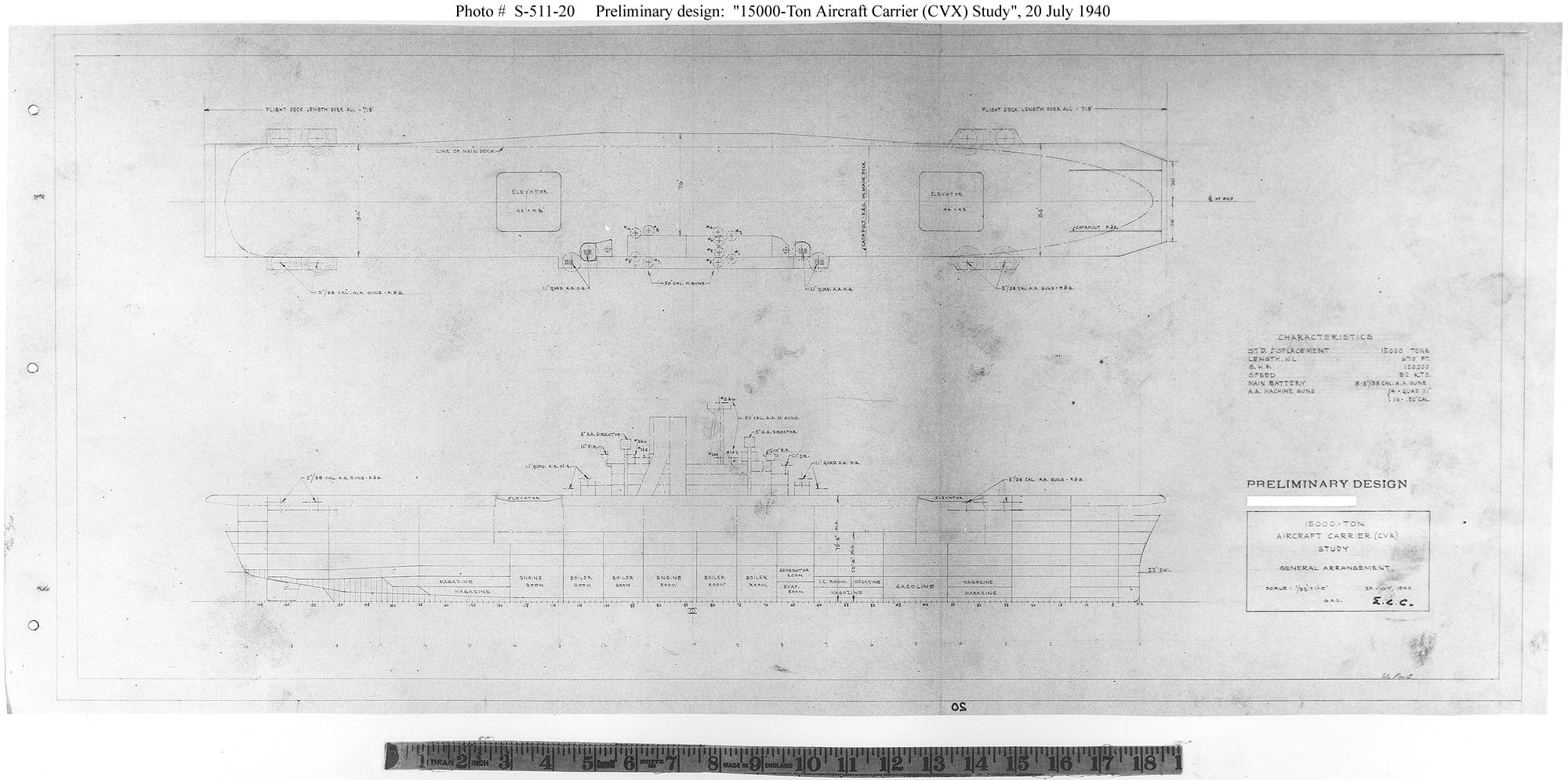- Joined
- 16 December 2010
- Messages
- 2,843
- Reaction score
- 2,093
A year before Pearl Harbour the USN commissioned a study into a 'tweaked' version of USS Wasp (CV-7) under the designation CVX, the principle changes were using only two aircraft elevators and the fitting of more powerful engines to give 32knots planned speed. Given what happened to USS Wasp the decision to not proceed with building a ship (or class) to this design was a good one.
https://www.shipscribe.com/styles/S-511/images/s-file/s511-20c.htm

https://www.shipscribe.com/styles/S-511/images/s-file/s511-20c.htm

Last edited:
